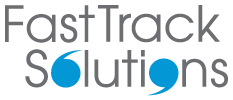Delivering a personalised experience is essential for success, especially considering that 52% of customers anticipate personalised offers (Forbes).
To nail this, brands need to get rid of the idea that everyone should be treated the same. No more generic email blasts and one-size-fits-all campaigns, it’s time to dig down into smaller groups that share certain characteristics – what you may call segmentation. By segmenting your audience, you can tailor your marketing efforts to make sure the people who are most likely to care about what you’re saying hear the right message at the right time.
What is audience segmentation?
Segmentation is a strategic approach used to pinpoint specific audience groups and deliver personalised messages that resonate and, most importantly, convert. These groups, or ‘segments’, come about through various identifiers, such as:
- Demographics – think job role, location, basic details
- Behaviour – how your audience navigates the buying journey, their purchasing patterns
- Psychographics – tendencies surrounding the needs, wants, and challenges of your audience, and the motivations that drive their choices
- Buyer journey stage – how far your audience is along the buying process; think awareness, consideration, or decision stages
Why should you segment your audience?
Segmenting your target audience is a game-changer for really getting to know them. It allows you to customise your marketing messages, and speak directly to the people you’re aiming to connect with as potential customers.
Imagine you have two distinct audience segments interested in your product or service – CEOs aged 35-65 and assistants aged 25-30, both driven by different needs or challenges. This calls for tailored messaging and solutions that resonate with each segment separately.
When individuals sense that a message was crafted just for them, they can become more open and more likely to convert. Tailored messaging creates a sense of value and understanding, which not only increases the likelihood for repeat business in the future but also begins to build a genuine connection between the individual and your brand.
Why audience segmentation is important
Audience segmentation propels your entire marketing function forward. When you know exactly who you’re trying to reach and how to reach them, your strategic and tactical marketing will take on a new level of effectiveness, laying a great foundation for sparking new conversations and cultivating brand loyalists.
How to segment your target audience
A great audience segmentation strategy works by:
- Defining your buyer persona – zeroing in on your most valuable customers and focusing on what they need from your business can help to define your target audience groups
- Driving high-quality leads – targeting the right people with tailored messaging increases your chances of generating click-throughs and other key metrics, bringing in higher-quality leads
- Accelerating timely conversions – delivering the right message at the right time ensures that your audience will convert quickly, improving the overall efficiency of your sales cycle.
- Building relationships – audience segmentation is your ally in creating marketing messages that strike a chord and develop meaningful connections with your audience
Data-driven targeting and segmentation strategies
Using data to reach the right people is a no-brainer. By utilising analytics and insights derived from good datasets, you can understand what really makes your audience tick, and talk to them in the right way. A data-driven approach to segmentation not only refines target demographics but also enables you to create highly personalised and relevant content and deliver it, crucially, at the right time. The ability to optimise campaigns in real time based on data analysis can also contribute to increased conversion rates and a better allocation of resources.
Hyper-personalisation for better segmentation
Hyper-personalisation is not just about knowing your audience, it’s about understanding them. With hyper-personalisation, you’re creating tailored experiences that resonate with your audience segments based on their unique preferences, needs, and behaviours. This goes beyond tagging {first name} in what is otherwise a generic email send; it can be about predicting what your target audience wants before they even know it. As B2B brands embrace this level of hyper-personalisation, you will see a new level of connection between individuals and businesses.
Testing and measuring the effectiveness of audience segmentation
Measurement and testing play a key role in refining and optimising audience segmentation strategies. When it comes to reaching the right people with the right message, experimentation often comes into play. Through testing, you can assess different segmentation approaches and fine-tune your criteria to identify the best audience segments.
Measuring the effectiveness of your segmentation strategies can be eye-opening. Analysing engagement, conversions, and other metrics for each segment can help identify what resonates with particular groups and align your future messaging with their preferences and behaviours. Over time, your efforts will become more impactful and attuned to your audience’s needs.
Audience segmentation is not just a sales and marketing strategy, but a commitment to understanding and valuing your audience. To FastTrack your success in implementing segmentation in your strategy and aligning sales and marketing functions, contact us today to discuss how we can help.





